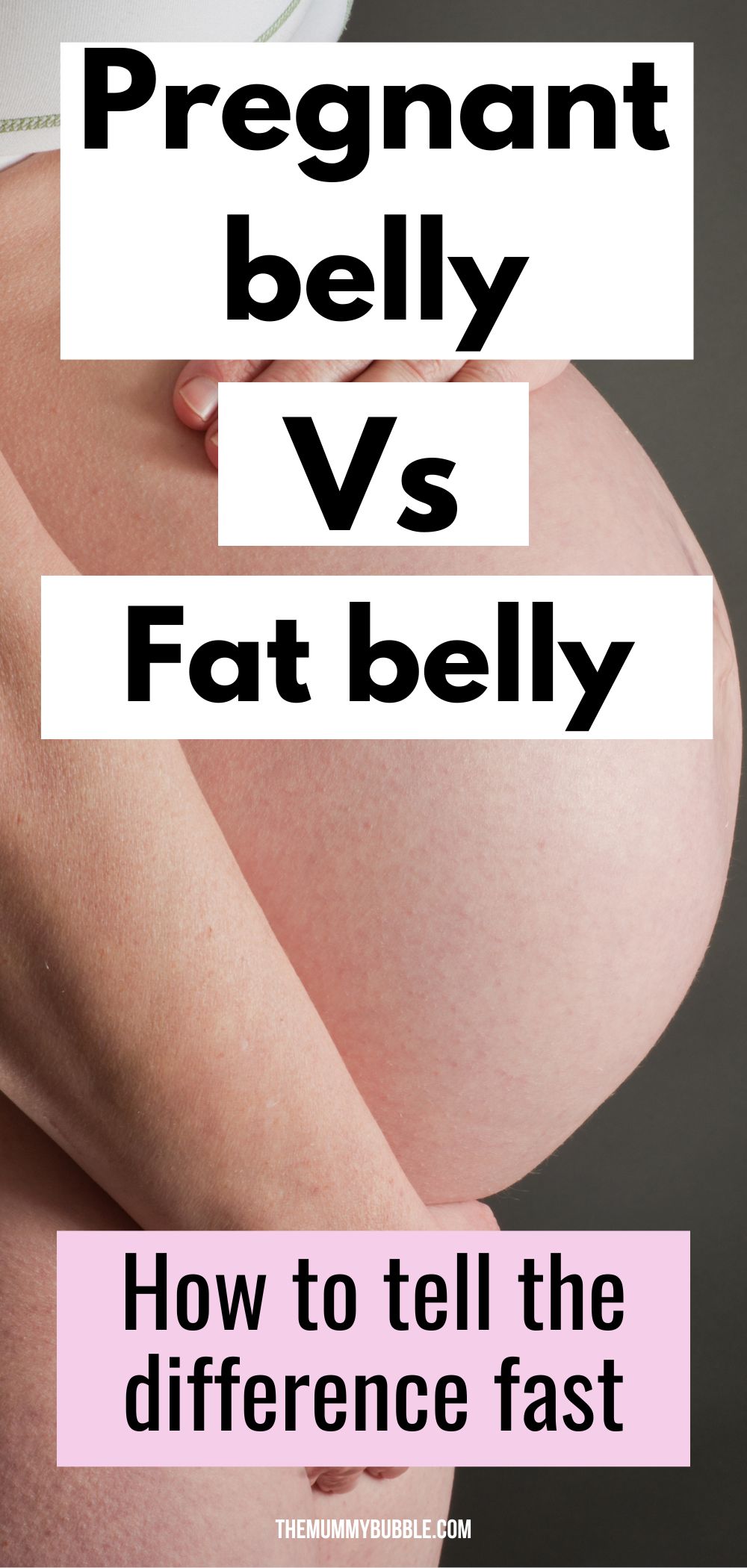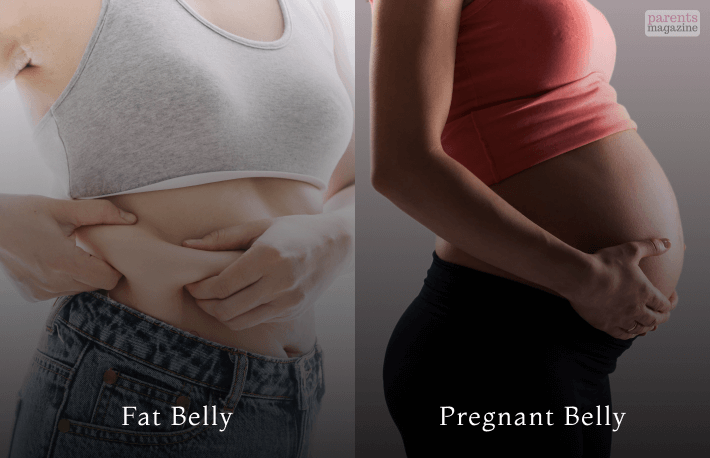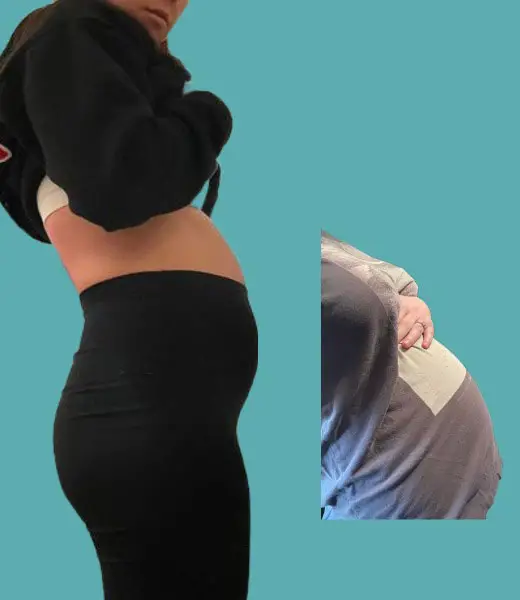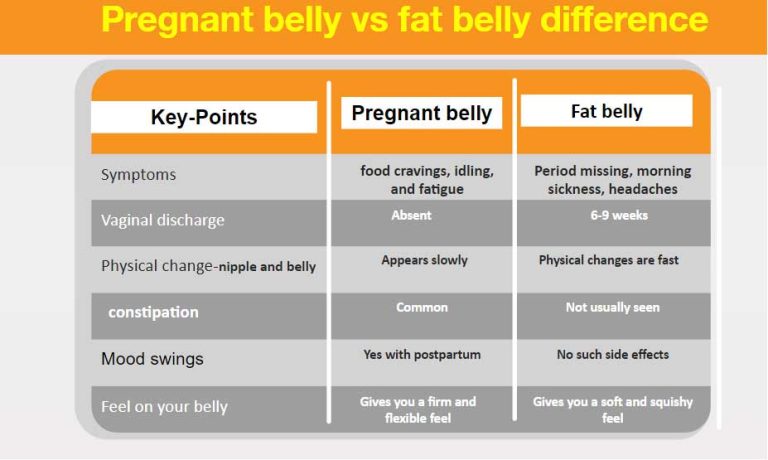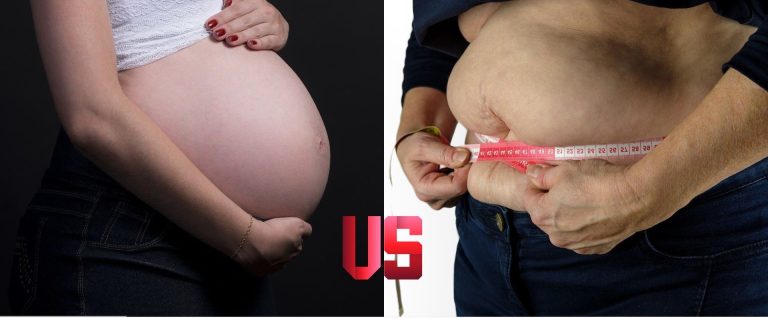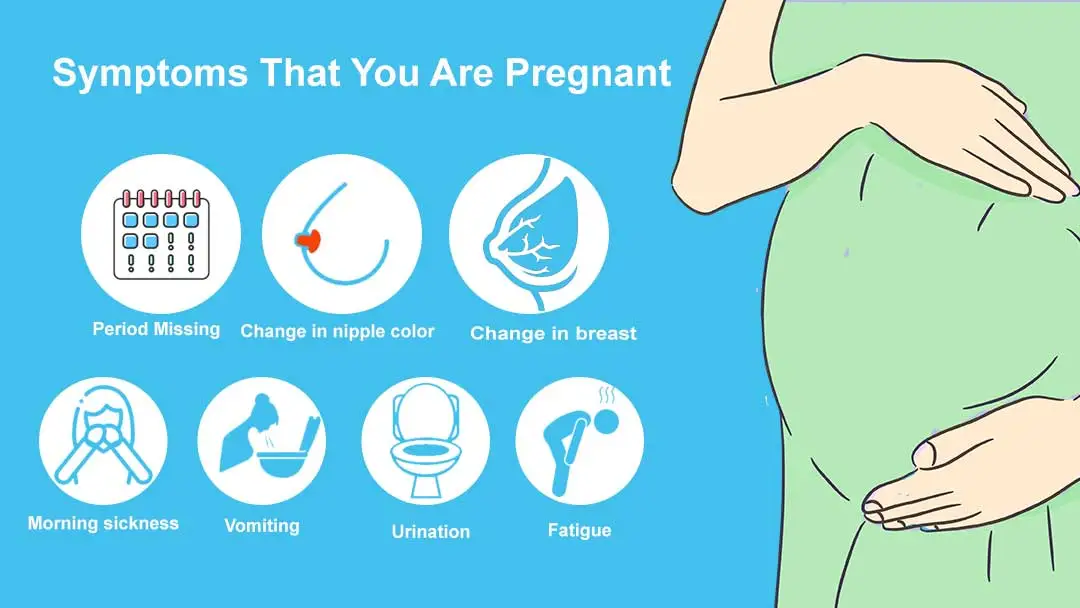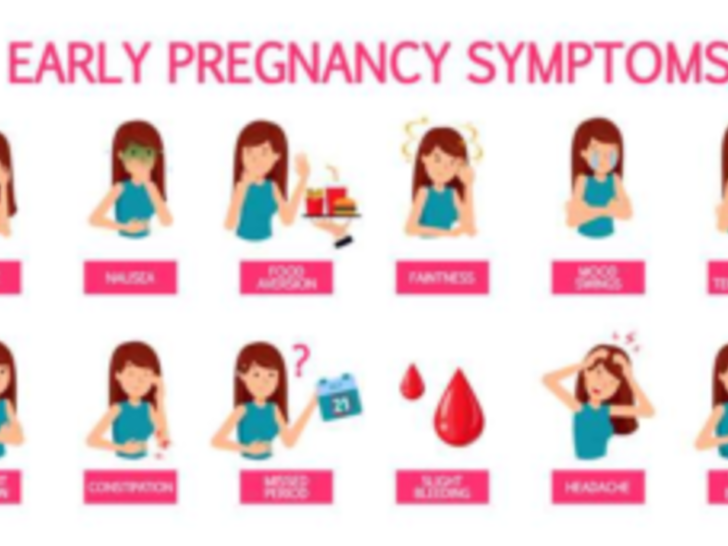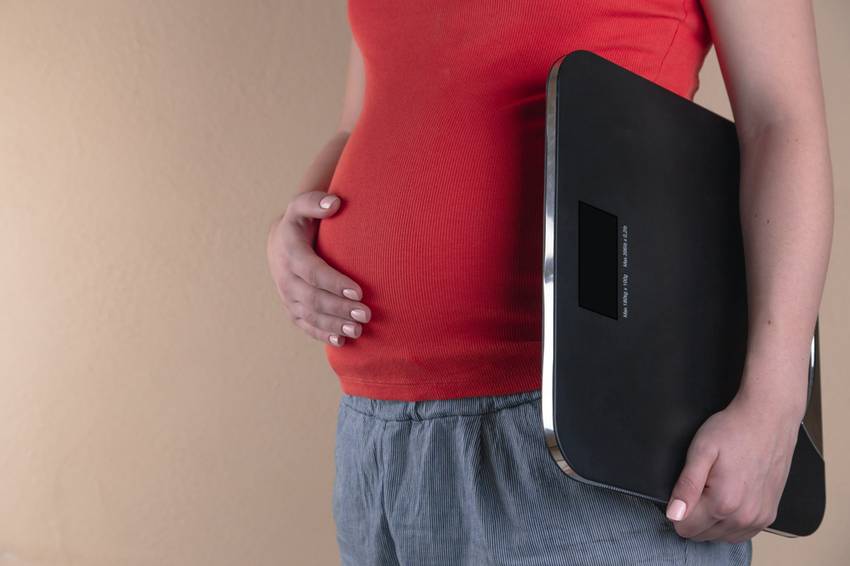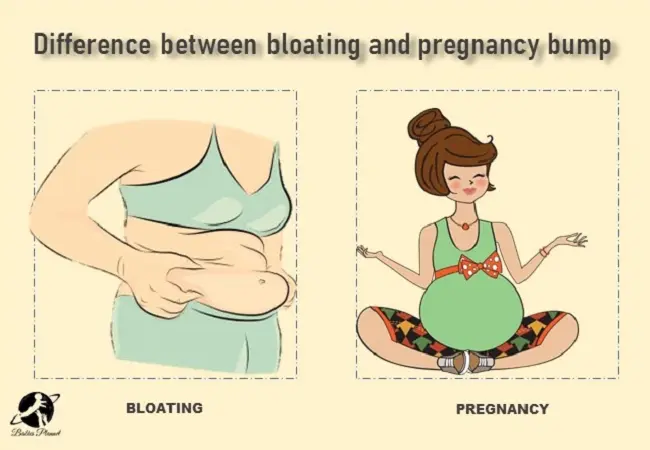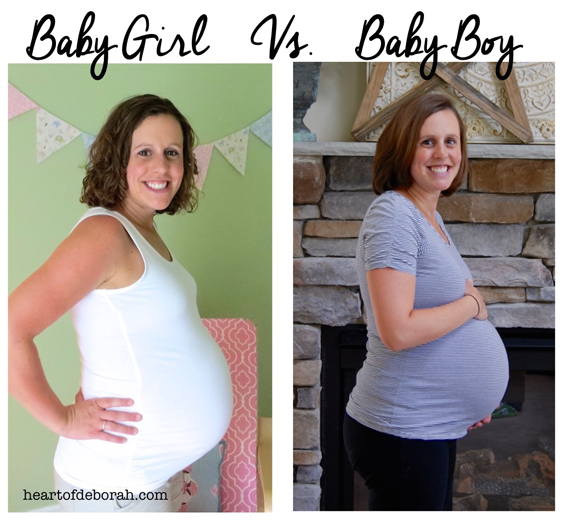Difference Between A Pregnant Belly And A Fat Belly
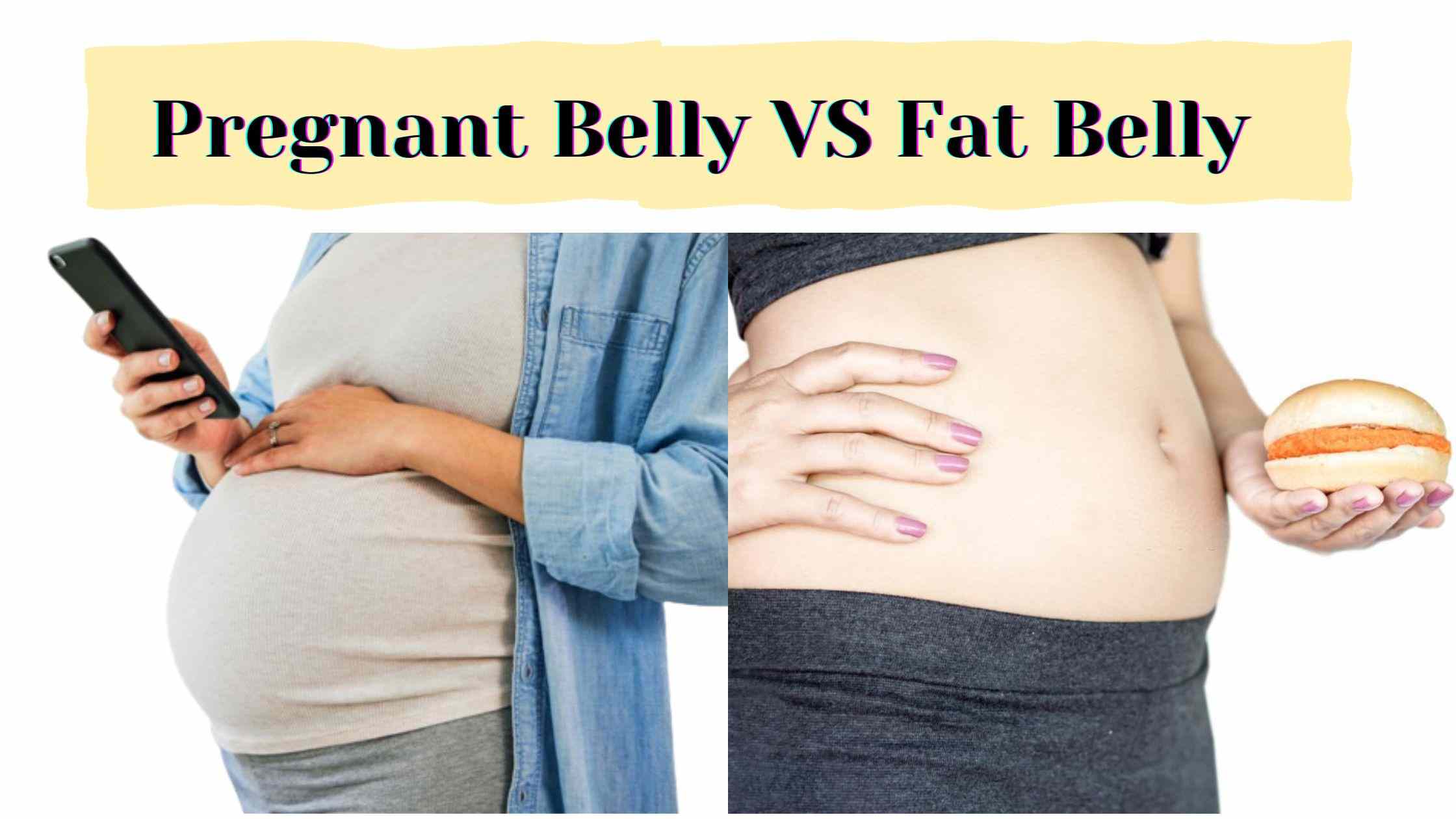
The late afternoon sun cast long shadows across the park, illuminating a group of mothers gathered near the sandbox. Laughter mingled with the squeals of children as they built sandcastles. A question floated on the breeze, a question as old as time itself: "Is she expecting, or has she just had a big lunch?"
Distinguishing between a pregnant belly and a non-pregnant one can be tricky, often leading to awkward social situations and well-intentioned but ultimately unwelcome commentary. This article aims to provide clarity on the key differences, helping to avoid embarrassment and promote a better understanding of the changes a woman's body undergoes during pregnancy.
Understanding the Changes: The Pregnant Belly
Pregnancy brings about a cascade of hormonal and physical changes, ultimately resulting in the visible growth of the abdomen. This isn't just about adding volume; it's a transformation deeply intertwined with the development of new life.
Dr. Emily Carter, an OB-GYN with 15 years of experience, explains, "The pregnant belly is a dynamic landscape, constantly evolving as the baby grows. It’s not just about weight gain; it's a carefully orchestrated symphony of expansion."
Shape and Size Progression
Early in pregnancy, before any visible bump appears, hormonal changes can cause bloating, making it difficult to discern pregnancy from simple digestive issues. Many women report feeling 'puffy' or experiencing increased gas.
As the first trimester progresses, the uterus begins to expand, though this is often imperceptible from the outside. The lower abdomen might feel firmer to the touch, but the overall shape may not change dramatically.
During the second trimester, the bump becomes more apparent. The shape tends to be firmer and rounder, often described as a "basketball" shape. This is due to the growing uterus pushing outwards.
The third trimester brings the most dramatic changes. The belly becomes significantly larger and may shift in shape depending on the baby's position. The skin stretches, often leading to stretch marks.
Texture and Feel
A pregnant belly tends to feel firm to the touch, especially as the pregnancy progresses. This firmness is due to the growing uterus and the amniotic fluid surrounding the baby.
Stretch marks, also known as striae gravidarum, are common during pregnancy. They occur when the skin stretches rapidly, breaking down the collagen and elastin fibers.
The American Academy of Dermatology notes that while genetics play a role, weight gain and the rate of stretching significantly influence their appearance.
Associated Symptoms
Pregnancy is accompanied by a range of other symptoms, offering additional clues. Morning sickness, fatigue, and breast tenderness are common early indicators.
Later in pregnancy, women may experience back pain, shortness of breath, and frequent urination. These symptoms are linked to the physical changes and the pressure the growing baby exerts on the body.
Understanding the "Fat" Belly
Excess abdominal fat, on the other hand, results from an accumulation of fat tissue around the abdomen. This can be due to various factors, including diet, lack of exercise, and genetics.
Unlike a pregnant belly, a belly resulting from excess fat typically develops more gradually. The shape, texture, and associated symptoms differ significantly.
Shape and Size
An abdomen primarily composed of fat tends to be softer and more pliable to the touch. The shape may be less defined, often described as "pear-shaped" or "apple-shaped," depending on where the fat is primarily stored.
The size of the abdomen may fluctuate depending on dietary habits and activity levels. Bloating may also contribute to temporary changes in size and shape.
Texture and Feel
A "fat" belly is typically softer and less firm than a pregnant belly. Pressing on the abdomen may reveal layers of subcutaneous fat. There is no uterus pushing outwards to create a firm resistance.
Stretch marks can occur with weight gain, but they are not exclusively associated with pregnancy. They may appear differently, often being wider and less numerous than those seen in pregnancy.
Associated Factors
Excess abdominal fat is often associated with other health concerns, such as high blood pressure, high cholesterol, and increased risk of type 2 diabetes. These are distinct from the symptoms of pregnancy.
Individuals with excess abdominal fat may also experience shortness of breath, fatigue, and difficulty with physical activity. These symptoms stem from the overall health impact of excess weight.
Key Distinguishing Factors
While visual observation can be misleading, several key differences can help differentiate between a pregnant belly and a "fat" belly. These are not foolproof, but they provide a useful framework.
Consider the rate of change. A pregnant belly typically grows steadily, especially after the first trimester, whereas weight gain-related abdominal growth is often more gradual and fluctuating.
Texture is another important factor. A pregnant belly tends to be firmer due to the expanding uterus, while a belly primarily composed of fat is softer.
Associated symptoms provide crucial context. Pregnancy is accompanied by a unique set of symptoms like morning sickness, fatigue, and breast tenderness, which are absent in cases of simple weight gain.
Age and recent medical history are also relevant. A woman of childbearing age who has recently stopped using contraception is more likely to be pregnant than someone who is post-menopausal.
Avoiding Assumptions and Promoting Respect
Ultimately, the best approach is to avoid making assumptions about someone's body. Commenting on a woman's physique is often unwelcome and can be deeply hurtful, regardless of whether she is pregnant or not.
"A woman's body is her own, and she has the right to share information about her pregnancy, or not, on her own terms," emphasizes Sarah Jones, a body image advocate.
Instead of focusing on appearances, we can foster a culture of respect and empathy. Complimenting someone's outfit, sharing a kind word, or simply engaging in a meaningful conversation are far more impactful ways to connect.
It's also crucial to be mindful of the potential impact of our words on women who may be struggling with infertility or pregnancy loss. Comments about weight or appearance can be particularly painful for those facing these challenges.
Conclusion
While there are identifiable differences between a pregnant belly and a belly due to excess fat, judging based on appearance alone is never accurate. By understanding the nuances of these physical changes and, more importantly, prioritizing respect and empathy, we can create a more supportive and inclusive environment for everyone.
The true beauty lies not in deciphering the shape of a belly, but in recognizing the inherent value and worth of every individual, regardless of their physical form.
